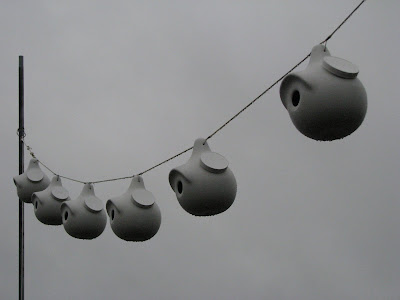I'm both embarrassed for and angry at my former hometown TV station, because the world is laughing. Buzzfeed has a list of the 15 funniest local TV news stories of 2009, one of which features WSFA TV 12 News (Montgomery) breaking a story about the universal laws of physics being violated in a soon-to-open consignment shop (needing publicity, no doubt) in Prattville, Alabama. Apparently it's been going around on the interwebs for a while, but I just saw it for the first time. This is not journalism; it's an insult to the intelligence of the viewers (and the onscreen caption, "Standing on it's [sic] own" only makes it worse). This is just a broom with the bristle ends cut flat, so it's standing on end just as a two-by-four might. The center of gravity is low, making the lean of the lightweight handle seem odd. Did it even occur to reporter Bryan Henry to pick up the phone and call a physics professor, or maybe even try it with a similar broom from Wal-Mart? No, that might ruin the story. The problem is, many gullible people will view this and actually believe something supernatural is going on. The store owner even says the "holy spirit" might be involved. Why do these news outlets treat such oddball stories with credulity? What do you suppose they would do if they saw one of these on a slow news day?
In the follow-up banter with the anchors, Bryan Henry actually claimed he felt something like "a magnetic pull." Isn't gravity something like that, Bryan? Senior anchor Bob Howell, whom I've met, is a veteran journalist, and knows what is and isn't newsworthy, but he just chuckled. Co-anchor Valorie Lawson was somewhat skeptical, however, and for that I give her credit. Oh, for more skepticism in our public airwaves. With some modifications this piece could still have been aired, but as an entertaining learning experience.
And the phenomenon spreads! Here's another newscast (South Haven, MN) that reported the same thing (but with three brooms). At least this station followed up its original piece with an interview with a local university physicist (if WSFA did, I can't find it). But then they just had to follow him with a psychic, and it's downright irresponsible to "balance" science with woo-woo.
Sigh.
Happy (and Skeptical) New Year.
The fact that a believer is happier than a skeptic is no more to the point than the fact that a drunken man is happier than a sober one.
-George Bernard Shaw













































